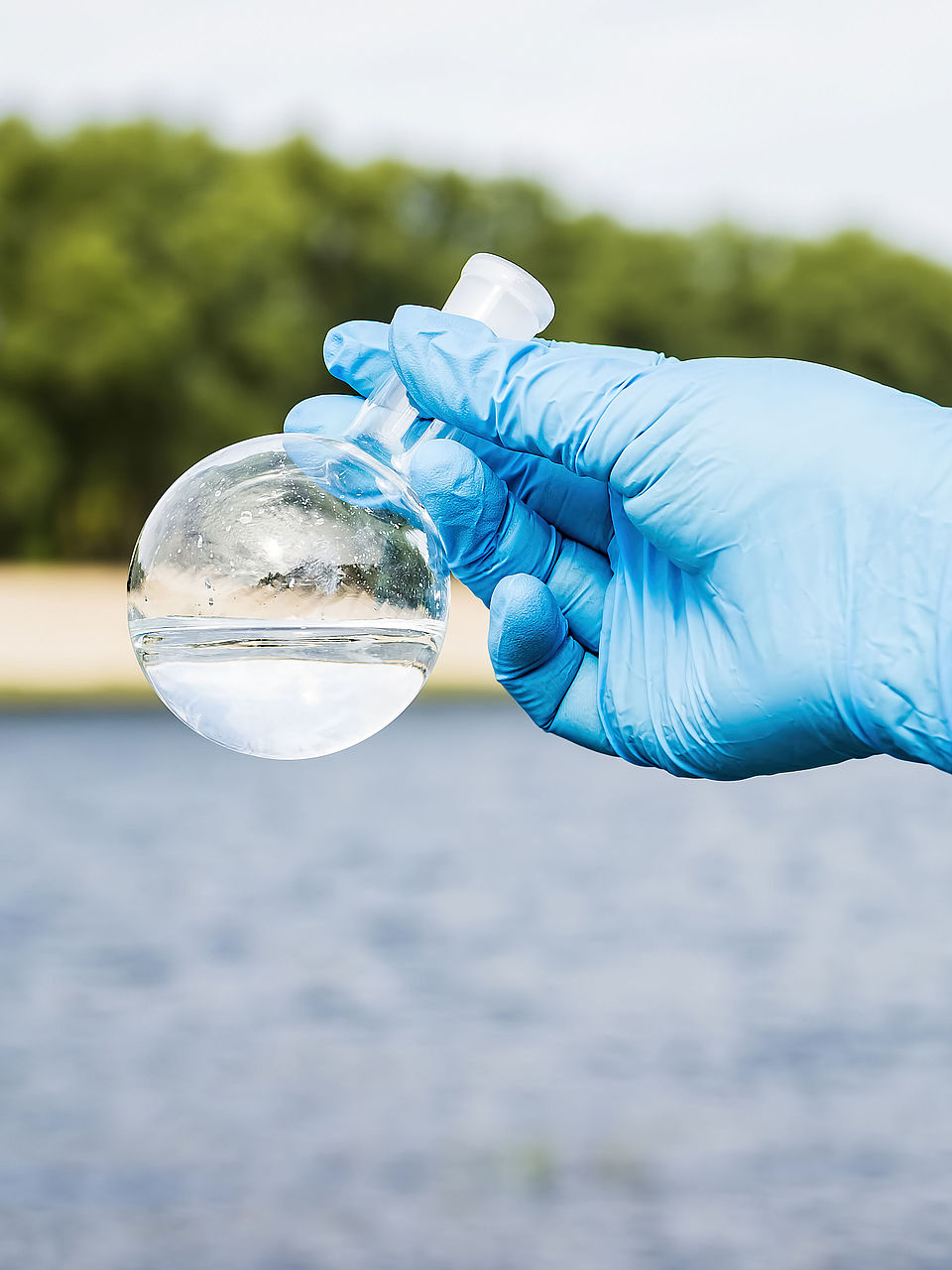
PFAS analysis and detection
Extensive expertise in the analysis and detection of PFAS in the environment and water for over 10 years.
To comply with regulatory requirements and act responsibly, PFAS analysis is now necessary for many industrial and utility companies. To check your samples, you need an experienced analytical laboratory that is equipped with the required measuring instruments.
WESSLING analyses all types of matrices for per- and polyfluorinated substances
For over 10 years, we have been carrying out analyses for perfluorinated and polyfluorinated alkyl substances (PFAS) in our independent laboratories. Whether drinking water or wastewater, soil or sediment, we adapt the analytical methods and sample preparation accordingly and detect PFAS in your sample.
We have the expertise and equipment to detect the 20 compounds listed in the European Drinking Water Directive of 16 December 2020. These will also be adopted in the German Drinking Water Ordinance (TrinkwV) as of mid-2023.
Our analytical services and our service
- Sampling and analysis of almost all matrices
- On request: provision of the appropriate vessels for own sampling
- Measurement by LC/MS-MS according to DIN 38407-42 or DIN 38414-14
- Analysis of water and solids according to DIN EN 17025
What are PFAS?
Per- and polyfluoroalkyl substances (PFAS) comprise over 4000 synthetically produced chemical compounds. These substances have been used extensively since the 1950s and are valued by industry for their non-stick, waterproof, and heat-resistant properties. Furthermore, they have been used for decades in all common fire extinguishing foams (from private fire extinguishers to large-scale operations at airports, for example).
The substances are also called “eternal pollutants” because PFAS molecules are highly persistent, i.e., they are very difficult to degrade in the environment. Another danger is the potentially high accumulation in human and animal tissue. PFAS are therefore subject to various European regulations.




